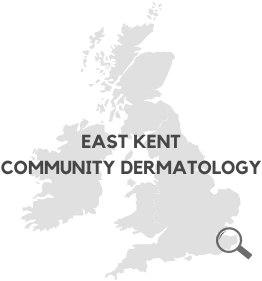We use cookies to help provide you with the best possible online experience.
By using this site, you agree that we may store and access cookies on your device. Cookie policy.
Cookie settings.
Functional Cookies
Functional Cookies are enabled by default at all times so that we can save your preferences for cookie settings and ensure site works and delivers best experience.
3rd Party Cookies
This website uses Google Analytics to collect anonymous information such as the number of visitors to the site, and the most popular pages.
Keeping this cookie enabled helps us to improve our website.
Warts and Verrucae
Wart is that on my foot?!
There are several types of wart. Verrucae are a type of wart found on the foot.
Warts and verrucae are not harmful, however depending on where it is located it can be sore or painful.
Many people are self-conscious if somewhere visible on the body.
How do you get them?
Through contaminated surfaces or closes skin to skin contact.
This virus gets in through tiny breaks in the skin. It is more likely to spread when skin is wet/ damp or skin is damaged.
It can take anything from a few weeks to a year to appear after contact.
How long do they last?
How long is a piece of string? A wart will resolve on its own but it can take a long time.
A person’s health, medication and treatment regime will contribute to the length it is present for.
What causes them?
A strain of the HPV virus, this is in the majority of the population’s blood stream.
It is more common for some groups of people to have the visible signs of it- a wart of verruca.
These are; children, older people and those with a weakened immune system.
Treatment
Leave it
If it is not causing an issue or bothering you it will resolve, this can take many months. It is not harmful to leave it.
Topical treatment
Salicylic/Lactic Acid solutions can be applied directly to the area effected. How well you do this and how often will affect how well it works and if it aids it helps it to resolve.
Cryotherapy
Extreme cold is used on to target the affected area and disrupt the cells by freezing and thawing them. This can be affective after a single treatment, but sometimes many sessions are required.
Other treatments
Duct tape, garlic, banana skin etc. There are many other treatments used to treat warts, but not all have evidence to support use.
Top Topical Tips
Soak the area first (e.g. in the bath) so the skin is softer and will absorb the treatment better.
A plaster applied over the treatment area can increase effect.
Some treatments come with a file; this is to disrupt the surface layer of skin. Do not file down a long way. If the area cracks or bleeds it can make it worse and the virus could spread.
Topical treatment needs to be used consistently for 1 year before an alternative treatment can be considered.
Topical treatments are not available on NHS prescription.
If the wart is becoming increasingly painful, changes rapidly or effects a large area these are reasons to review with your GP.

